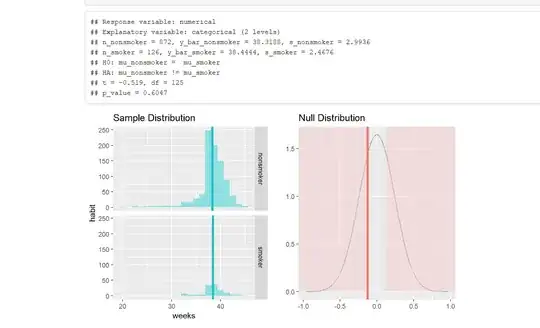i conducted a test to see weather smoking have a relationship with pregnancy period or not and the mean and sd were almost the same between smokers and non smokers moms however i got a high p-value i guess because of the high sample size so in a situation like this what should i do ?
here is the inference function i used
inference(y = weeks , x = habit , data = nc , method = "theoretical" ,
type = "ht" , statistic = "mean" , conf_level = 0.95 , null = 0 ,
alternative = "twosided" )
